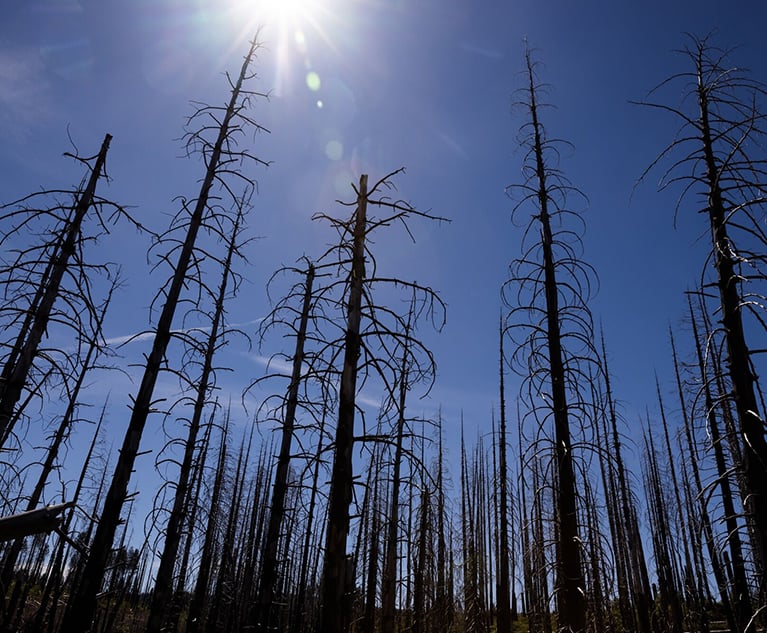With the 17th annual America's Claims Event (ACE) festivitiesjust around the corner, we caught up with keynote presenter DouglasDixon for a sneak peek of his widely anticipated presentation,“AfterSandy: Dealing With Superstorm Claims Issues.”
|As the senior VP of claims at Swiss Re explains,sophisticated financial institutions were among the manycompanies impacted by Superstorm Sandy, which is now ranked asthe third costliest hurricane in U.S. history.
|Figuring out loss of income, extra expenses incurred, and otherfactors involved in calculating business interruption (BI) claimswill be particularly challenging. However, theclaims management lessons learned post-Sandy will beinvaluable handling the next “superstorm.”
|Can you describe Superstorm Sandy in the context ofother recent weather-related catastrophes and its relative effecton claims operations?
|Dixon: This event is similar to HurricaneKatrina when it comes to how it has impacted claims operations.While the average paid loss will not be as large as Katrina, thenumber of losses is very similar in size. So, the U.S. insuranceindustry has not seen an event of this size in seven years. It isdifficult for an insurance company claim operation to staff andtrain for an event of this size since they do not happen with a lotof frequency. If the insurance company is large enough, then it mayhave a national catastrophe team that travels the country to dealwith events of this magnitude. At the other end of the spectrum aresmaller companies that might have to ask underwriters, executives,accountants and other staff to help the claims team when an eventof this size strikes. Whattypes of damages caused the most issues in terms of claimsmanagement?
|Dixon: The initial claims management issueafter this event was dealing with the number of properties damaged.ISO's Property Claims services estimated the number of homeowners'claims at over 1 million, and the number of auto claims at over250,000. Couple that with some of the state insurance departmentsshortening time requirements for insurers to respond to theirinsureds, and it was a real test for insurers and their catastropheplans. Insurers had to call upon all of their resources for triageclaims so the most urgent situations could be dealt with first.
|Commercial claims will present a whole different set of issuesfor claims management. Commercial claims that arise from this eventare going to prove to be very complicated because of the nature ofthe business suffering damages. I see two categories of businessesthat I am sure will prove to be very complicated. The firstcategory is the infrastructure providers. Insurers of the entitiesthat provide the trains, subways, bridges, tunnels and utilitieswill be sorting through very complicated and unusual businessinterruption claims as well as property damage claims. The secondcategory is financial service companies. Lower Manhattan is themost important financial district in the world. Many of thecompanies based here do very sophisticated transactions that may ormay not be covered by business interruption coverage.
|Discuss some of the main claims issues that were raisedas a result of the superstorm.
|Dixon: First and foremost, insurers have tosort out the peril, either flooding or wind, that caused thedamages. Both commercial and personal lines policies can responddifferently to damages from these two different perils. Insurancepolicies contain different policy language in the insuring clauses,deductibles, exclusions, sublimits and limits that apply based onthe peril that caused the damage. In some cases, like homeownersinsurance, there is no coverage at all if flooding caused thedamages.
|Second, I think business interruption (BI) claims will bedifficult to adjust after this storm. As I mentioned earlier, manyof the companies that suffered interruption are sophisticatedfinancial companies. Figuring out the loss of income (if any) andthe extra expense incurred by insured in this area will be verycomplicated. Some insureds may claim they suffered a businessinterruption (BI) loss even if they did not suffer physical damage.This can occur in areas where there was a government order to shutdown an area, or if all the businesses around the insured were shutdown due to physical damages. Typically, the insured who sufferedno physical damage would not have coverage, but you can bet theywill be looking at all four corners of their insurance policy tofind coverage.
|Looking forward, how can we learn from this and bebetter prepared to mitigate this substantial risk in thefuture?
|Dixon: Certainly, this was a wakeup call forthe northeast. It had been a while since a significant hurricane or“superstorm” had made landfall in this area, and I think peopletried to ignore the risk. I think the single most important thingto be done is for the insurance industry and the government to worktogether to update the mapping for flood zones. The public needs toknow if they own property that could flood. I also suspect insurerswill reconsider deductibles and rates especially for property closeto the coastline. I would hope that these efforts might discouragedeveloping expensive property in flood prone zones, but I admitthat is unlikely in such a highly populated area.
|Certainly much thought needs to be given to improving ourinfrastructure. Many people were without power for too long. Arethere cost effective ways to protect or build a stronger electricalgrid?
|There are all kinds of things I think individuals have learnedfrom buying generators to getting a full tank of gas as a stormapproaches. Businesses should have learned the importance of havinga business continuity plan, making sure electronic data is backedup and having a good insurance policy.
|What do you hope the audience will take away from yourtalk at the America's Claims Event?
|Dixon: I hope they will take away anunderstanding of what made this event unique, but a realizationthat it could easily happen again. I want the audience to have ahealthy respect for the great job the insurance industry has donein dealing with this event. I want to shine the light upon a fewclaim issues and offer some suggestions for handling claimsproperly. Finally, I hope I can trigger the audience to think aboutwhat we learned form a claims standpoint in this event, so we canapply that knowledge in dealing with future events.
|The aforementioned presentation—AfterSandy: Dealing With Superstorm Claims Issues—will take place onJune 20, 2013 at 10:00 a.m. To register to attend or to learn moreabout superstorm claims, click here.
|About ACE
|America's Claims Event (ACE) bringstogether senior claims managers and a wealth of industrypractitioners & experts to examine tacticalstrategies intended to improve all aspects of claims handling. Thisyear's event will take place in Austin, Texas, where more than 400professionals and decisionmakers from midsized to large Fortune 500companies will exchange ideas and fostersolutions for the most perplexing operational challenges.
Want to continue reading?
Become a Free PropertyCasualty360 Digital Reader
Your access to unlimited PropertyCasualty360 content isn’t changing.
Once you are an ALM digital member, you’ll receive:
- All PropertyCasualty360.com news coverage, best practices, and in-depth analysis.
- Educational webcasts, resources from industry leaders, and informative newsletters.
- Other award-winning websites including BenefitsPRO.com and ThinkAdvisor.com.
Already have an account? Sign In
© 2024 ALM Global, LLC, All Rights Reserved. Request academic re-use from www.copyright.com. All other uses, submit a request to [email protected]. For more information visit Asset & Logo Licensing.








